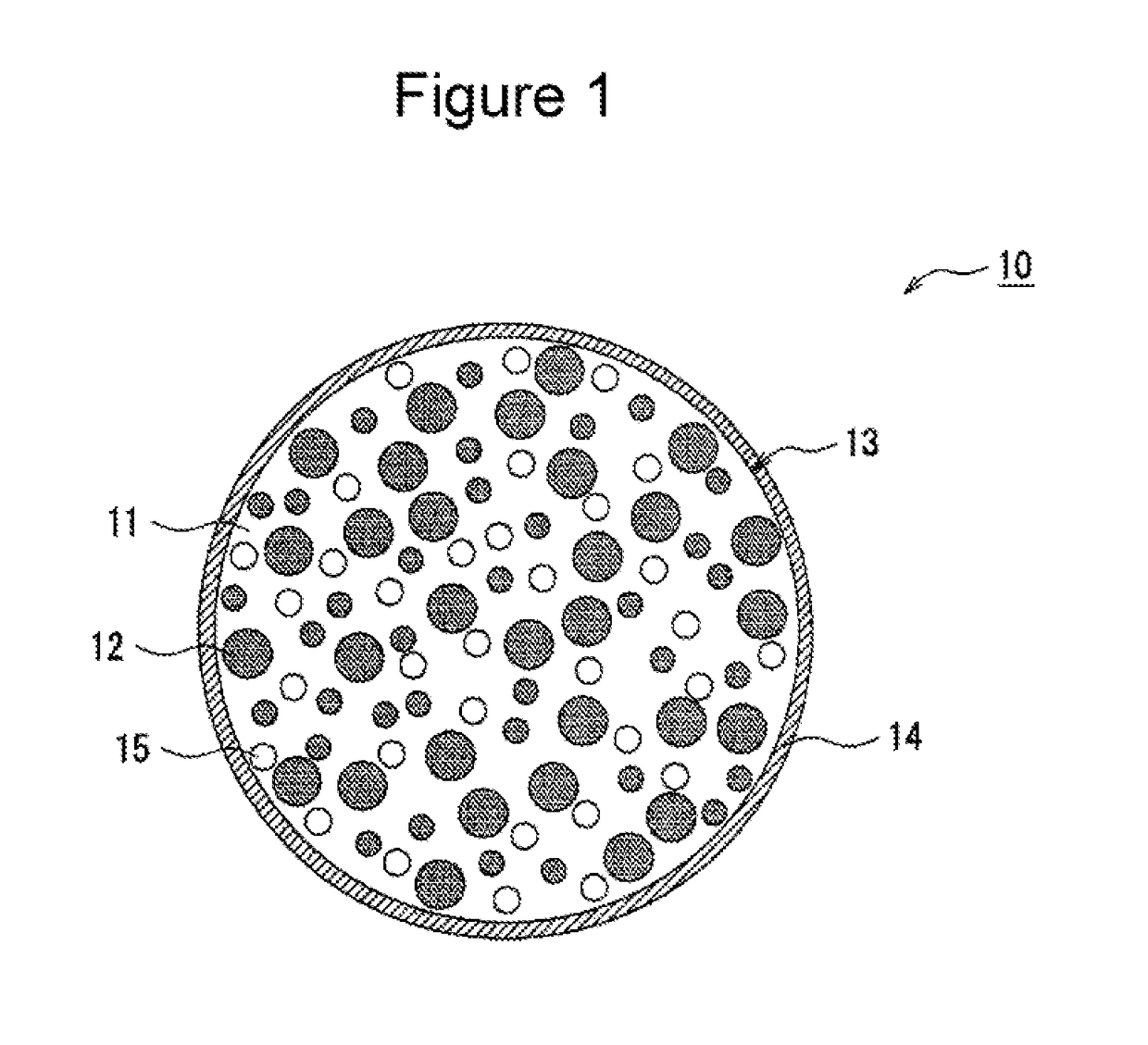NEGATIVE-ELECTRODE ACTIVE MATERIAL FOR NON-AQUEOUS ELECTROLYTE SECONDARY BATTERY, NEGATIVE ELECTRODE FOR NON-AQUEOUS ELECTROLYTE SECONDARY BATTERY, AND NON-AQUEOUS ELECTROLYTE SECONDARY BATTERY (as amended)
a secondary battery and negative electrode technology, applied in the direction of cell components, alkali metal silicates, silicates, etc., can solve the problems of increasing the amount of irreversible components, cracking in the matrix of active material particles around silicon particles, and deteriorating cycle characteristics, so as to achieve the effect of improving cycle characteristics
- Summary
- Abstract
- Description
- Claims
- Application Information
AI Technical Summary
Benefits of technology
Problems solved by technology
Method used
Image
Examples
experimental examples
[0055]Although the present disclosure will be further described in the following experimental examples, the present disclosure is not limited to these experimental examples.
experimental example 1
Production of Negative-Electrode Active Material
[0056]A Si powder (3N, 10 μm ground product), a Li2SiO3 powder (10 μm ground product), and a ZrO2 powder (10 μm ground product) were mixed at a mass ratio of 42:58:1 in an inert atmosphere and were charged into a pot (made of SUS, volume: 500 mL) of a planetary ball mill (P-5 manufactured by Fritsch). The pot was charged with 24 balls made of SOS (diameter: 20 mm) and was closed. The mixed powder was ground at 200 rpm for 50 hours. The powder was then removed in an inert atmosphere and was heat-treated in an inert atmosphere at a temperature of 800° C. for 4 hours. The heat-treated powder (hereinafter referred to as base particles) was ground, was passed through a 4.0-μm mesh sieve, was mixed with coal pitch (MCP250 manufactured by JFE Chemical Corporation), and was heat-treated in an inert atmosphere at a temperature of 800° C. to be covered with carbon, thus forming an electrically conductive layer. The average particle size was adju...
experimental example 2
[0063]A negative-electrode active material was prepared in the same manner as in Experimental Example 1 except that the mixing ratio of Si / Li2SiO3 / ZrO2 was 42 / 58 / 0.01. A battery A2 was fabricated in the same manner as in Experimental Example 1 using the negative-electrode active material.
PUM
 Login to View More
Login to View More Abstract
Description
Claims
Application Information
 Login to View More
Login to View More - R&D Engineer
- R&D Manager
- IP Professional
- Industry Leading Data Capabilities
- Powerful AI technology
- Patent DNA Extraction
Browse by: Latest US Patents, China's latest patents, Technical Efficacy Thesaurus, Application Domain, Technology Topic, Popular Technical Reports.
© 2024 PatSnap. All rights reserved.Legal|Privacy policy|Modern Slavery Act Transparency Statement|Sitemap|About US| Contact US: help@patsnap.com








